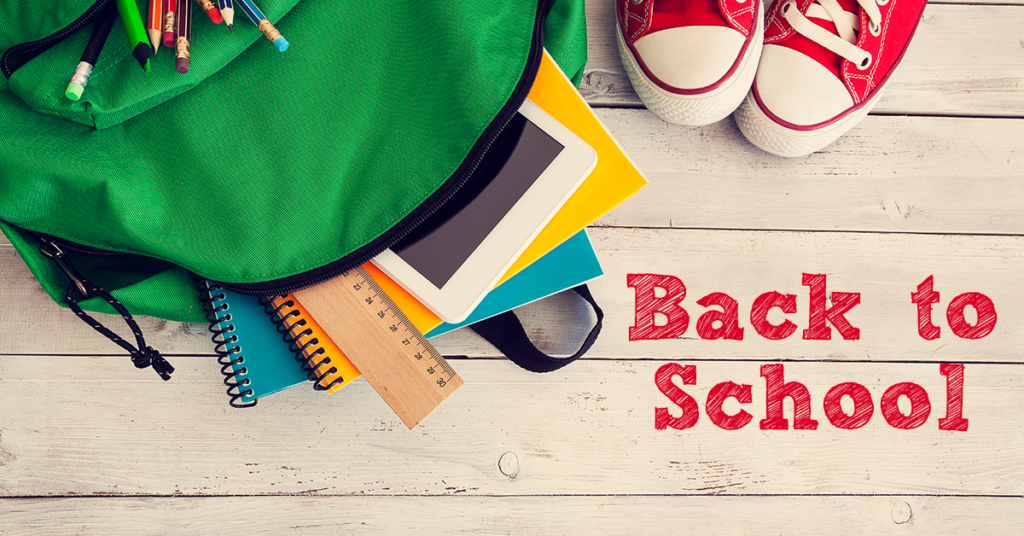It’s almost that time again… back to school. A time where parents rejoice at the thought of sending their kids back to school and teachers dream of receiving them with open arms. DHD#10 is here to remind parents and teachers that during this transition time, it is crucial to be on the look out for potential health concerns in children.
Head Lice
Head lice (pediculosis) are parasitic insects found on people’s heads. They do not pose a significant health hazard and are not known to spread disease. Lice do not jump or fly, but crawl from hair to hair and feed on blood from scalp bites. Anyone can get head lice regardless of their personal hygiene practices. Head lice are most common in preschool and elementary school age children and household members of infected individuals.
Head lice can be passed from one person to another in a number of ways:
- Head to head contact is the most common way
- Sharing items like combs, brushes, towels, bedding, hats, coats, scarves, ribbons, and barrettes.
- Placing heads on furniture, rugs, pillows, or car seats recently used by someone with lice.
- Dogs, cats, and other pets do not spread human lice.
How to prevent/control the spread of head lice:
- Avoid head-to-head (hair-to-hair) contact during play and other activities at home, school, and elsewhere
- Do not share clothing such as hats, scarves, coats, sports uniforms, hair ribbons, or barrettes.
- Do not share combs, brushes, or towels. Disinfest combs and brushes used by an infested person by soaking them in hot water (at least 130°F) for 5–10 minutes.
- Do not lie on beds, couches, pillows, carpets, or stuffed animals that have recently been in contact with an infested person.
- Machine wash and dry clothing, bed linens, and other items that an infested person wore or used during the 2 days before treatment using the hot water (130°F) laundry cycle and the high heat drying cycle. Clothing and items that are not washable can be dry-cleaned OR sealed in a plastic bag and stored for 2 weeks.
- Vacuum the floor and furniture, particularly where the infested person sat or lay. However, spending much time and money on housecleaning activities is not necessary to avoid reinfestation by lice or nits that may have fallen off the head or crawled onto furniture or clothing.
- Do not use fumigant sprays or fogs; they are not necessary to control head lice and can be toxic if inhaled or absorbed through the skin.
Hearing Concerns
The signs and symptoms of hearing loss are different for each child. Even if a child has passed a hearing screening before, it is important to look for the following signs:
Infants:
- Does not startle at loud noises.
- Does not turn to the source of a sound after 6 months of age.
- Does not say single words, such as “dada” or “mama” by 1 year of age.
- Turns head when he or she sees you but not if you only call out his or her name. This sometimes is mistaken for not paying attention or just ignoring, but could be the result of hearing loss.
- Seems to hear some sounds but not others.
Children:
- Speech is delayed and/or not clear.
- Does not follow directions. This sometimes is mistaken for not paying attention or just ignoring, but could be the result of a partial or complete hearing loss.
- Often says, “Huh?”
- Turns the TV volume up too high.
Vision Concerns
A child should be checked for vision problems by an eye doctor (an ophthalmologist), pediatrician, or other trained specialist at:
- Newborn to 3 months
- Six months to 1 year
- About 3 years AND 5 years
Look for the following signs of vision loss:
- The closing or covering of one eye
- Squinting of the eyes
- Complaints that things are blurry or hard to see
- Trouble reading or doing other close-up work, or holding objects close to eyes to see
- Blinking more than usual or being unusually cranky when doing close-up work (such as looking at books)
- One eye of a child with vision loss could look out or cross. One or both eyes could be watery, and one or both of the child’s eyelids could also look red-rimmed, crusted, or swollen.
It is important that if any signs and symptoms of a health concern are noted, a doctor be contacted as soon as possible.

